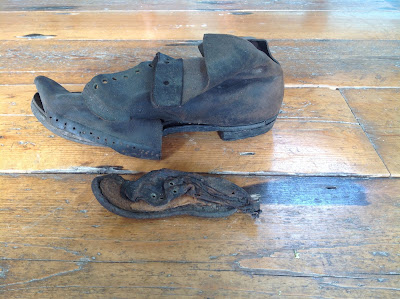Irish Workhouses and Genealogy (Part 2)
-Parliamentary
& Civil Records-
Not all records relating to Irish Workhouses were generated in-house. In fact, much of what survives today are records created by the government.
A great government
record is the 1901 and 1911 Census. This census lists all the inhabitants and staff
of the various workhouses. Please note that the paupers are usually listed by
initials.
We can also use newspapers as a surprisingly full source of information about workhouse inmates and staff alike. If you are lucky you may even find information given about a pauper's family or the conditions leading to their admittance to the workhouse. The
Freeman’s Journal, 27 August 1864 for example, refers to a man named Howard,
commiserating with his fate and his diet, ‘…the horrid stuff miscalled “bread”,
on which he was fed was unlike anything with which the paupers were fed
before’.[1]
In the case of Portumna Workhouse the most useful set of records are those of the civil death registers. These are kept at the GRO Dublin and you can access them via Irish Genealogy.ie. All the death records are digitised but not all are uploaded. Where you cannot see the actual record, you can see the index which you need for ordering a copy of the death certificate.
Parliamentary papers
Through
websites such as Enhanced British Parliamentary Papers on Ireland [2], we have incredible access to the parliamentary process of the Poor Law system
in Ireland. The papers consist of Accounts, Bills, Reports and Command Papers. These provide an insight into Poor Law history but more importantly, are a great source of names if your ancestor happens to be a Poor Law clerk etc. If you have access to the full Parliamentary Papers [3] which is through Proquest and many universities and reference libraries/archives have a subscription, you can view the Returns sent back from all the Irish Workhouses. These cover topics as varied as, how many paupers wear shoes, to how much farming is done. These can give an insight into the reality of everyday life in different Irish workhouses. If your ancestor was in Rathkeale or Carrick-on-Suir, they may well be working on the Model Farms that these Unions ran, as opposed to just breaking stones or other menial tasks.
The Parliamentary papers also include letters back and forth between various Boards of Guardians and the Poor Law Commission. These letters can contain the names of individuals and relate descriptions of their circumstances.
Building up a picture of
those unfortunate enough to enter an Irish Workhouse is part of on-going work for historians and genealogists alike. As our research grows we will be able to link other potentially useful records like Poverty Relief Loans
and Petty Sessions cases, into one joined together picture of life for those who were not well-off. Aside from
uncovering the details themselves, what we must never forget is the personal
story behind each case and the desperate conditions underpinning each individual
decision to enter the workhouse.
Clare Doyle (In-house archivist and genealogist at The Irish Workhouse Centre)
[1]
Freemans Journal, 27 August 1864


Comments
Post a Comment